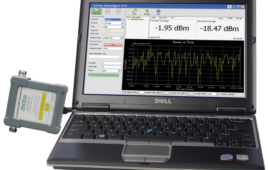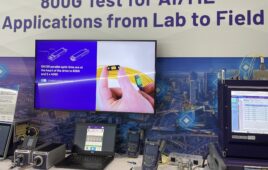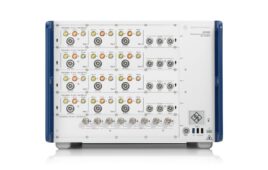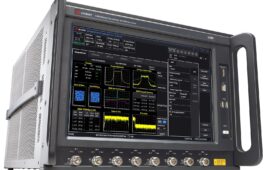Over the last 30 years, we have traveled through several generations of mobile networking. First, 1G brought analog voice. With the advancement of integrated circuits and digital signal processing, 2G made digital voice available and increased network capacity. 3G combined mobile data with voice so people could make a phone call while sending an email, for the first time. 4G was all about wireless internet at higher speeds and desktop applications on smartphones.
Now, 5G Has Arrived
5G is a connected application ecosystem. Each application will adaptively manage data speed, latency, and reliability based on the tasks at hand. From the perspective of service providers, 5G will consolidate all its communications systems under one platform to meet end-user application needs, such as data, voice, and video. The 5G network architecture should provide:
- Massive capacity, about 1,000 times more than 4G
- Very-fast data rates, about 100 times more than 4G
- Ultra-low latency, less than 1 ms
To achieve these goals, network and user equipment manufacturers must create new technologies to ensure the network is more efficient and deploy a new spectrum to support the much wider bandwidth requirements.
Three major technologies support the deployment of 5G:
- Millimeter-wave (mmWave) network deployment
- Massive MIMO
- Beamforming
mmWave Network Deployment
5G requires much higher bandwidth, as much as 800 MHz to 2 GHz. The current sub-3 GHz cellular band will not support wider bandwidths, so the only way to make 5G work is to move the system to a higher frequency band. The frequency bands that have this potential are mmWave bands, as the next-generation 5G cellular networks promise improvements in network capacity, data rates, and latency.
Deploying mmWave frequency bands to provide a link between UE and base stations present many challenges. A major challenge is understanding mmWave path loss properties, specifically the 5G link behaviors, path loss, and link budget.
Point-to-point microwave communication requires a clearance between the propagation path and the nearest obstacles on the ground, governed by the Fresnel zone theory. 5G networks will have much lower antenna heights, potentially introducing significant propagation blockage. In addition, extra losses due to rain, shadowing loss, foliage, atmosphere absorption, and humidity will affect the 5G mmWave link budget (Figure 1).
Using a handheld microwave handheld analyzer with extended range transmission analysis (ERTA) can help test for these propagation losses. ERTA requires a connection between two handheld microwave analyzers; one as the transmitter, and one as the receiver. With triggers on each box synchronizing the measurement, and Ethernet connection used for frequency range and data capture, real-time data can be recorded, played back, and exported for post analysis.
Fresnel zone: The region between and around a transmitting antenna and a receiving antenna system, used to understand the strength of the waves.
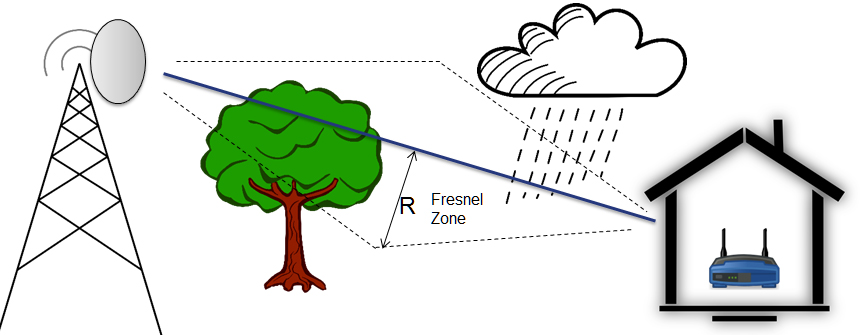
Figure 1. Example of the Fresnel zone and how weather and foliage can affect the 5G mmWave link budget.
Massive MIMO
Massive MIMO is an extension of multi-user MIMO, meaning the number of base station antennas is much larger than the number of UEs in the cell. Typically, the number of antennas is about 48-64, but with 5G, more antennas are required to make the beam much narrower. This allows the base station to deliver RF energy to the UE efficiently and precisely. As 5G massive MIMO implementation moves to mmWave frequencies, the physical size of the antenna has reduced, making the antenna small, easy to install, and maintain.
Beamforming
Beamforming is a MIMO technology that uses multiple antennas to control the direction of a wave-front by appropriately weighing the magnitude and phase of each antenna signals. Used to achieve efficiency, Beamforming overcomes pathloss, channel noise, and cross-talk. Because path loss is much greater in the mmWave band than sub-6 GHz, beamforming is crucial to the success of 5G networks (Figure 2).
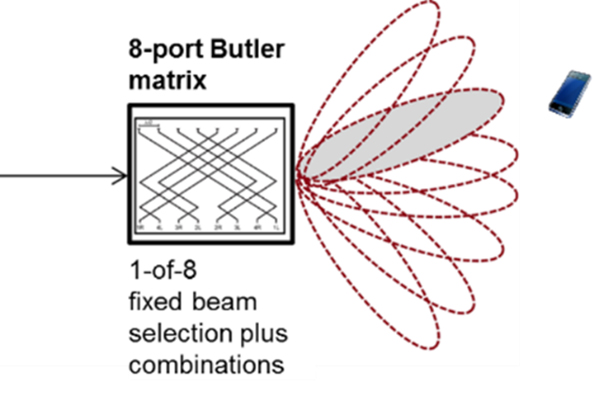
Figure 2. Example of how multiple beams are used to control the direction of a wave-front to a cellular device.
5G beamforming has three stages:
- Beam acquisition
- The base station (BS) performs a beam sweep, sending out a beam to eight different directions in one symbol. The UE (user equipment) identifies the best beam and transmits RACH (random access channel) to BS.
- Feedback
- The UE sends the ranking list of beams to BS, so the best possible beam will be steered towards the UE.
- Change
- During the data transfer, the UE constantly provides feedback to the BS to make small adjustments to the beam. This enables it to achieve a better signal-to-noise ratio (SNR).
Phased array antennas are a practical and low-cost means to beamforming tests. A phased array antenna is formed by an array of smaller antenna elements, such as individual patches or dipoles. With the varying phases and amplitudes of the signal applied, the antenna array can steer a beam in a chosen direction (Figure 3).
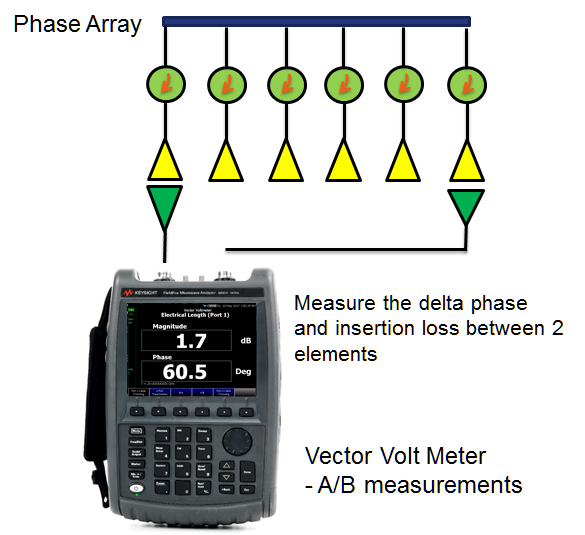
Figure 3. Phased array antennas are crucial for 5G testing since 5G base station radios and the antenna are integrated into a single unit without an RF connector to make measurements.
5G base station radios and its phased array antenna are integrated into a single hardware unit. This means there is no RF connector at the antenna to allow test equipment to measure key specifications such as return loss and VSWR. This type of testing is now accomplished over-the-air (OTA). You can measure the performance of the antenna by using a handheld spectrum analyzer to configure the antenna pattern. The sweep time needs to be set long enough to synchronize to the rotation of the golden antenna.
A 5G phased array antenna has up to 64 adjustable elements. It is important to know whether the adjustment can be translated to phase shift over-the-air. You can test this with a handheld network analyzer and a vector voltmeter (VVM) measuring the phase shift between two receiving ports. The VVM reports the delta phase and magnitude between the two elements.
Conclusion
Deploying 5G on mmWave presents great challenges to RF engineers, and it is essential to have a robust channel model for the higher 5G millimeter wave frequencies. Since 5G is still in the development stage, it will continue to change alongside standardization development; therefore, new tests will be added. Keeping up with the ever-changing technology is fast and competitive, but with the correct equipment and measurements, you and your testing will be able to keep up.

